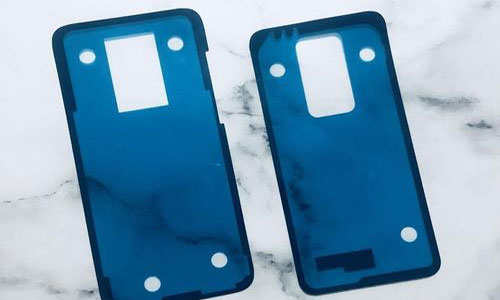
Mobile phones are essential products in today's society. As a downstream industry, the die-cutting industry provides auxiliary materials for mobile phone manufacturing. We need to understand the role of die-cut parts in the assembly of mobile phones in order to better serve the industry.
Definition of Mobile Phone Accessories:
Mobile phone accessories refer to the components (including packaging) used for assembling mobile phones, excluding plastic casings, motherboards, and electronic components.
Functions of Mobile Phone Accessories:
1. Fixation: Used for fixing electronic components, mobile phone modules, and decorative elements on the phone's casing.
2. Dust-proof: Often used for dust-proofing in areas such as earpieces and microphones.
3. Shock absorption: Used for buffering between internal electronic components and plastic casing.
4. Protection: Used for packaging and transportation protection.
Back adhesive products are an essential part of mobile phone accessories and are commonly used for:
- LCD back adhesives
- Camera lens back adhesives
- Selfie mirror back adhesives
- Positioning bracket back adhesives
- Main screen back adhesives
- Back adhesive for small decorative components, etc.
Functions:
They ensure that the mobile phone components are firmly attached to the casing without detachment or displacement.
Material Selection:
As a mobile phone accessory, back adhesives commonly use double-sided adhesive tapes from brands like 3M and TEST. The following are some commonly used brands and models for reference:
Back Adhesive Production Requirements:
There are specifications for the production of back adhesive die-cut parts in mobile phone accessories. The single-side gap of the back adhesive should be 0.1mm to 0.15mm, and the middle gap should be 0.2mm to 0.3mm or more. This prevents displacement after the adhesive is applied and ensures that the middle frame is visible outside the LCD frame of the casing.
For back adhesive products, they can be made as a single piece without separation.
For very small camera decoration back adhesives, they can be omitted from production, but the other two ends must be made into one piece.
By doing so, the efficiency and yield of die-cutting products can be improved. During manual assembly by production line workers, only one operation is required for adhesive application, thereby improving efficiency.
The length and width of tear marks should be determined based on the size of the accessory. The narrowest dimension should not be less than 2mm. If it is too narrow, it may break during tearing. Typically, the tear marks are placed in the easiest-to-reach and tear sections after the entire casing is assembled, while the back adhesives for LCD and camera lenses are best situated within the frames.
Knife die-cut lines are generally used for LCD frames with large waste materials. After the assembly of the LCD, it is not easy to tear off the adhesive. By adding another cut, the tearing speed of the LCD can be increased, thus improving efficiency in the assembly process.
The die line should be made at the contact of the hand tear position, and indicated as follows:
Mobile phone accessories die-cutting for adhesive products, technical requirements (including but not limited to)
1, the rubber edge must be blanked neatly, no burrs;
2, must have a key control size, and to add "*" in front;
3, if there is a die line, to mark "only cut off the release paper, do not cut off double-sided tape";
4, the production position of the hand tear and the glue should be clearly marked;
5, hand-torn release paper and packaging release paper need to be flushed
Contact: Pamela
Phone: +86 189 6365 3253
E-mail: info@industryprocess.com
Whatsapp:+86 189 6365 3253
Add: Yajing Industrial Park, No. 59 Shuangjing Street, Weiting Town, Suzhou Industrial Park
We chat
